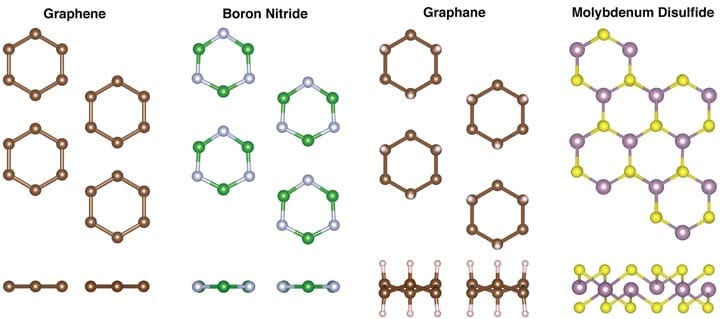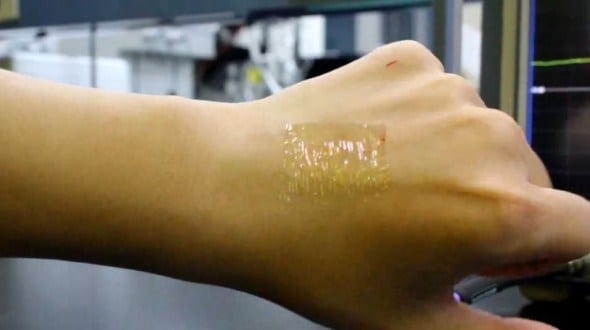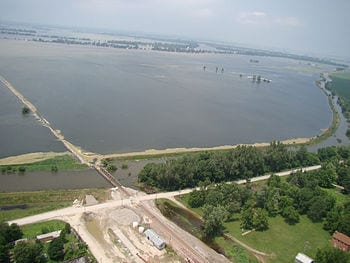Columbia researchers used Brookhaven Lab supercomputer simulations to map and compare the transformations and breaking points of graphene and other promising monolayers.
Interested in an ultra-fast, unbreakable, and flexible smart phone that recharges in a matter of seconds? Monolayer materials may make it possible. These atom-thin sheets—including the famed super material graphene—feature exceptional and untapped mechanical and electronic properties. But to fully exploit these atomically tailored wonder materials, scientists must pry free the secrets of how and why they bend and break under stress.
Fortunately, researchers have now pinpointed the breaking mechanism of several monolayer materials hundreds of times stronger than steel with exotic properties that could revolutionize everything from armor to electronics. A Columbia University team used supercomputers at the U.S. Department of Energy’s Brookhaven National Laboratory to simulate and probe quantum mechanical processes that would be extremely difficult to explore experimentally.
They discovered that straining the materials induced a novel phase transition—a restructuring in their near-perfect crystalline structures that leads to instability and failure. Surprisingly, the phenomenon persisted across several different materials with disparate electronic properties, suggesting that monolayers may have intrinsic instabilities to be either overcome or exploited. The results were published in the journal Physical Review B.
“Our calculations exposed these monolayer materials’ fundamental shifts in structure and character when stressed,” said study coauthor and Columbia University Ph.D. candidate Eric Isaacs. “To see the beautiful patterns exhibited by these materials at their breaking points for the first time was enormously exciting—and important for future applications.”
The team virtually examined this exotic phase transition in graphene, boron nitride, molybdenum disulfide, and graphane—all promising monolayer materials.
The Latest on: Monolayer materials
[google_news title=”” keyword=”Monolayer materials” num_posts=”10″ blurb_length=”0″ show_thumb=”left”]
via Google News
The Latest on: Monolayer materials
- Common Sweetener Neotame Damages Gut Cellson April 26, 2024 at 5:00 pm
The common sweetener neotame damages in vitro gut cells at concentrations replicating the acceptable daily intake. That's the finding from a new Anglia Ruskin University study, published in Frontiers ...
- Quasi-2D spin-Peierls transition through interstitial anionic electrons in K(NH₃)₂on April 25, 2024 at 1:34 pm
In a paper published in Science Bulletin, a Chinese team of scientists predicts a novel electride K(NH3)2, with interstitial electrons distributed at cages formed by six ammonia molecules and forming ...
- A novel universal light-based technique to control valley polarization in bulk materialson April 24, 2024 at 9:52 am
Electrons inside solid materials can only take certain values of energy. The allowed energy ranges are called "bands," and the space between them, the forbidden energies, is known as "band gaps." Both ...
- Scientists Create New 2D Form of Gold Called Goldeneon April 23, 2024 at 6:00 am
They added gold atoms to the top of the stack, but those atoms didn't stay put. Due to the electrochemical properties of gold and silicon, the gold atoms diffused into the layered structure and ...
- Atom-by-atom: Imaging structural transformations in 2D materialson April 18, 2024 at 5:56 pm
Silicon-based electronics are approaching their physical limitations and new materials are needed to keep up with current technological demands. Two-dimensional (2D) materials have a rich array of ...
- Meet ‘goldene’: this gilded cousin of graphene is also one atom thickon April 17, 2024 at 5:00 pm
Goldene is a gilded cousin of graphene, the iconic atom-thin material made of carbon that was discovered in 2004. Since then, scientists have identified hundreds more of these 2D materials. But it has ...
- Researchers discover dual topological phases in an intrinsic monolayer crystalon April 17, 2024 at 10:08 am
An international team working with single-atom thick crystals found TaIrTe4's transition between the two distinct topological states of insulation and conduction. The material exhibited zero ...
- Scientists Create ‘Goldene’, a Potentially Ground-Breaking New Materialon April 16, 2024 at 2:00 pm
Scientists achieved a breakthrough in materials science with the creation of Goldene, a new material with exciting properties.
- Researchers control quantum properties of 2D materials with tailored lighton April 15, 2024 at 12:21 pm
A team of scientists has developed a method that harnesses the structure of light to twist and tweak the properties of quantum materials. Their results, published today in Nature, pave the way for ...
- Quantum Control Unlocked: Creating Resistance-Free Electron Channelson April 12, 2024 at 8:26 am
For the first time, scientists electrically manipulate a ‘chiral interface state’ in a 2D material, with promise for energy-efficient microelectronics and quantum computing. Scientists have taken the ...
via Bing News





